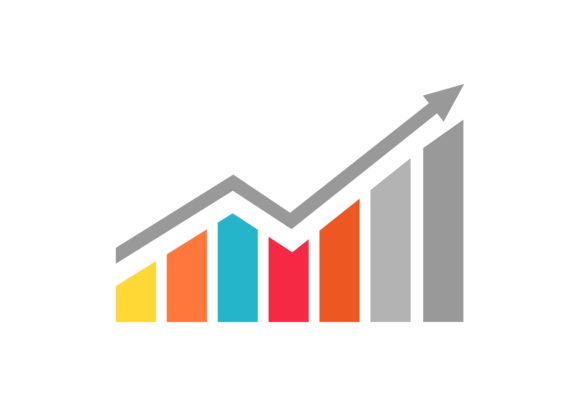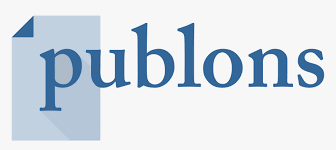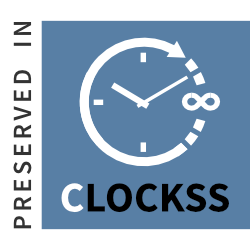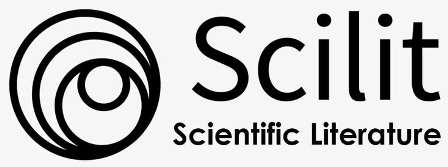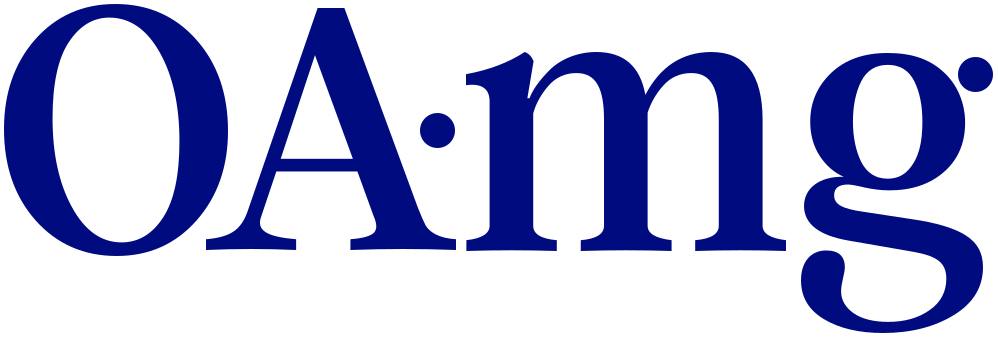Buckthorn Leaves as an Efficient Material for Simultaneously Multi Eco-Friendly Purposes
DOI:
https://doi.org/10.31272/jeasd.3033Keywords:
Adsorption, Alum sludge, Batch mode, Nano-zeolite, VanadiumAbstract
Zinc, an essential element, offers numerous benefits; however, an excessive accumulation of zinc within the human body can pose detrimental effects. This study endeavors to mitigate zinc contamination in water sources through an adsorption process utilizing buckthorn leaves as a cost-effective, natural adsorbent. The investigation examined various operational parameters that affect the adsorption process, including pH levels, initial zinc ion concentrations, buckthorn leaf dosage, contact duration, temperature, and agitation speed. The results showed that 78% was the maximum removal of zinc ions, achieved at the optimum conditions of 6, 25 ppm, 4.5 g, 120 min, 45 °C, and 350 rpm, respectively. Furthermore, the residual buckthorn leaves, laden with zinc ions, were evaluated for potential utilization as an organic fertilizer for white beans. The investigation entailed determining the zinc ion content adsorbed by the leaves. Subsequent cultivation trials demonstrated a noteworthy enhancement in bean pod yield from soil treated with zinc-loaded leaves, exhibiting a 9% increase compared to soil treated solely with raw leaves or left untreated. Notably, the resulting crop mass was equivalent across all treatment groups. Thus, this study presents an innovative approach to simultaneously manage solid waste and purify water, offering an efficient, cost-effective, and environmentally sustainable solution
References
M. L. Montes, L. A. Errico, R. C. Mercader, and M. A. Taylor, “Review and Statistical Analysis of Activity Values Reported for Coastal Sands Worldwide,” Chemosphere, vol. 364, p. 143201, Sep. 2024, doi: https://doi.org/10.1016/j.chemosphere.2024.143201.
F. Habashi, “Gmelin and His Handbuch,” Bulletin for the history of chemistry, vol. 34, no. 1, pp. 30–31, Jan. 2009, doi: https://doi.org/10.70359/bhc2009v034p030.
Z. Wang, H. Tian, J. Liu, J. Wang, Q. Lu, and L. Xie, “Cd(II) Adsorption on earth-abundant Serpentine in Aqueous environment: Role of Interfacial Ion Specificity,” Environmental Pollution, vol. 331, p. 121845, Aug. 2023, doi: https://doi.org/10.1016/j.envpol.2023.121845.
A. I. Khedr and H. E. Ghannam, “Evaluation of Some Heavy Metals in Water and Health Implications for Fish Consumers of the Great Cairo Sector of the Nile River,” Scientific Reports, vol. 15, no. 1, Apr. 2025, doi: https://doi.org/10.1038/s41598-025-95308-z.
S. J. Alhamd, M. N. Abbas, M. Manteghian, T. A. Ibrahim, and K. Dawood, “Treatment of Oil Refinery Wastewater Polluted by Heavy Metal Ions via Adsorption Technique Using Non-Valuable Media: Cadmium Ions and Buckthorn Leaves as a Study Case,” Karbala international journal of modern science, vol. 10, no. 1, Jan. 2024, doi: https://doi.org/10.33640/2405-609x.3334.
S. Ma, C.-Z. Liao, K.-M. Leung, Y. Zhou, and K. Shih, “Self-consumed Strategy to Reuse Cathode Residue for Zn Stabilization in Spent batteries: Structural Properties and Metal Stabilization Effect,” Waste Management, vol. 168, pp. 272–280, Aug. 2023, doi: https://doi.org/10.1016/j.wasman.2023.06.011.
M. Zare Khosheghbal, M. Esmaeilzadeh, F. Ghazban, and M. E. Charmsazi, “Heavy Metal Pollution Status in Surface Sediments of the Khajeh Kory River, North Iran,” Water Science and Technology, vol. 81, no. 6, pp. 1148–1158, Mar. 2020, doi: https://doi.org/10.2166/wst.2020.202.
B. C. Mbaeze, N. R. Ekere, C. S. Chukwu, O. K. Ominyi, and J. N. Ihedioha, “Harnessing Moringa oleifera Root Powder (MORP) for the Sustainable Remediation of Heavy Metal Contaminated Water,” International Journal of Phytoremediation, vol. 27, no. 2, pp. 1–12, Oct. 2024, doi: https://doi.org/10.1080/15226514.2024.2405627.
A. Ghosh, D. Sah, M. Chakraborty, and J. P. N. Rai, “Bio-mediated Detoxification of Heavy Metal Contaminated Soil and Phytotoxicity Reduction Using Novel Strain of Brevundimonas Vancanneytii SMA3,” Heliyon, vol. 9, no. 11, pp. e22344–e22344, Nov. 2023, doi: https://doi.org/10.1016/j.heliyon.2023.e22344.
Institute of Medicine, Food and Nutrition Board (IOM, FNB), “Office of Dietary Supplements - Zinc,” Nih.gov. https://ods.od.nih.gov/factsheets/Zinc-HealthProfessional/#en
ATSDR, “PUBLIC HEALTH STATEMENT Zinc,” 2005. Available: https://www.atsdr.cdc.gov/ToxProfiles/tp60-c1-b.pdf
Umair Bin Nisar et al., "Assessment of Water Quality Using entropy-weighted Quality Index, Statistical Methods and Electrical Resistivity Tomography, Moti village, Northern Pakistan," Journal of Contaminant Hydrology, vol. 264, pp. 104368–104368, May 2024, doi: https://doi.org/10.1016/j.jconhyd.2024.104368.
U. M. Agnew and T. L. Slesinger, “Zinc Toxicity,” PubMed, StatPearls Publishing, 2020. https://www.ncbi.nlm.nih.gov/books/NBK554548/
T. G. Ali, A. Keyon, and Naji Arafat Mahat, “Occurrence of Heavy Metals and Their Removal in Perna Viridis Mussels Using Chemical methods: a Review,” Environmental Science and Pollution Research, vol. 29, no. 4, pp. 4803–4821, Nov. 2021, doi: https://doi.org/10.1007/s11356-021-17343-3.
Z. J. S. Shadhan, S. Alhamd, and M. N. Abbas, "Recovery of Vanadium Element from Wastewater of Petroleum Refineries Using Effective adsorbent: Mathematical Approach via isothermal, Kinetics, and Thermodynamic Simulation," Al-Qadisiyah Journal for Engineering Sciences, vol. 17, no. 3, pp. 211–219, Sep. 2024, doi: https://doi.org/10.30772/qjes.2024.145441.1069.
R. R. Mandal, Z. Bashir, J. R. Mandal, and D. Raj, “Potential Strategies for Phytoremediation of Heavy Metals from Wastewater with Circular Bioeconomy Approach,” Environmental Monitoring and Assessment, vol. 196, no. 6, May 2024, doi: https://doi.org/10.1007/s10661-024-12680-5.
S. Moosavi, C. W. Lai, S. Gan, G. Zamiri, O. Akbarzadeh Pivehzhani, and M. R. Johan, “Application of Efficient Magnetic Particles and Activated Carbon for Dye Removal from Wastewater,” ACS Omega, vol. 5, no. 33, pp. 20684–20697, Aug. 2020, doi: https://doi.org/10.1021/acsomega.0c01905.
C. Dai et al., “Mechanisms and Product Toxicity of Activated carbon/peracetic Acid for Degradation of sulfamethoxazole: Implications for Groundwater Remediation,” Water Research, vol. 216, p. 118347, Jun. 2022, doi: https://doi.org/10.1016/j.watres.2022.118347.
S. Zafar et al., “Application of NaOH-treated rice husk for adsorptive discharge of cobalt ions from wastewater,” Desalination and Water Treatment, vol. 226, pp. 328–338, Aug. 2024, doi: https://doi.org/10.5004/dwt.2021.27286.
Z. Shen, Y. Zhang, O. McMillan, F. Jin, and A. Al-Tabbaa, “Characteristics and Mechanisms of Nickel Adsorption on Biochars Produced from Wheat Straw Pellets and Rice Husk,” Environmental Science and Pollution Research, vol. 24, no. 14, pp. 12809–12819, Mar. 2017, doi: https://doi.org/10.1007/s11356-017-8847-2.
Y. Zhang, R. Zheng, J. Zhao, Y. Zhang, and F. Ma, “Biosorption of Zinc from Aqueous Solution Using Chemically Treated Rice Husk,” BioMed Research International, vol. 2013, no. 1, p. 365163, Jan. 2013, doi: https://doi.org/10.1155/2013/365163.
A. Saleem, A. Munawar, and S. Kauser, “Removal of Naphthol Green B and Indigo Carmine from Wastewater by Wheat Bran and urea-modified Rice Husk,” Environmental Monitoring and Assessment, vol. 197, no. 3, Feb. 2025, doi: https://doi.org/10.1007/s10661-025-13719-x.
J. Garba, W. A. Samsuri, R. Othman, and M. S. A. Hamdani, “Evaluation of Adsorptive Characteristics of Cow Dung and Rice Husk Ash for Removal of Aqueous Glyphosate and Aminomethylphoshonic Acid,” Scientific Reports, vol. 9, no. 1, Nov. 2019, doi: https://doi.org/10.1038/s41598-019-54079-0.
S. A. Ibrahim, M. B. Hasan, I. M. Al-Tameemi, T. A. Ibrahim, and M. N. Abbas, "Optimization of Adsorption Unit Parameter of Hardness Remediation from Wastewater Using Low-cost Media," Innovative Infrastructure Solutions, vol. 6, no. 4, Jul. 2021, doi: https://doi.org/10.1007/s41062-021-00564-3.
M. Abbas and H. Nussrat, “A Statistical Analysis of Experimental Data for the Adsorption Process of Cadmium by Watermelon Rinds in a Continuous Packed Bed Column,” International Journal of Innovation, Creativity and Change. www.ijicc.net, vol. 13, no. 3, p. 2020, 2020, Accessed: Jun. 27, 2025. [Online]. Available: https://www.ijicc.net/images/vol_13/Iss_3/13321_Abbas_2020_E_R.pdf
M. Villen-Guzman, D. Gutierrez-Pinilla, C. Gomez-Lahoz, C. Vereda-Alonso, J. M. Rodriguez-Maroto, and B. Arhoun, “Optimization of Ni (II) Biosorption from Aqueous Solution on Modified Lemon Peel,” Environmental Research, vol. 179, no. Part B, p. 108849, Dec. 2019, doi: https://doi.org/10.1016/j.envres.2019.108849.
A. I. Alwared, T. J. Al-Musawi, L. F. Muhaisn, and A. A. Mohammed, "The Biosorption of Reactive Red Dye onto Orange Peel Waste: a Study on the Isotherm and Kinetic Processes and Sensitivity Analysis Using the Artificial Neural Network Approach," Environmental Science and Pollution Research, vol. 28, no. 3, pp. 2848–2859, Sep. 2020, doi: https://doi.org/10.1007/s11356-020-10613-6.
T. Xu et al., “Covalent Organic Framework with Triazine and Hydroxyl Bifunctional Groups for Efficient Removal of Lead(II) Ions,” Industrial & Engineering Chemistry Research, vol. 58, no. 42, pp. 19642–19648, Sep. 2019, doi: https://doi.org/10.1021/acs.iecr.9b04193.
A. Shehab, Z. A. Mahdi, and H. R. Lotfy, “A Comprehensive Study on Pomegranate (Punicagranatum) Peels as a low-cost biosorbent: Adsorption mechanisms, application, regeneration, and Cost Analysis,” Environmental Monitoring and Assessment, vol. 197, no. 3, Feb. 2025, doi: https://doi.org/10.1007/s10661-025-13626-1.
A. E. Ramírez-Rodríguez, E. Cristiani‐Urbina, L. Morales-Barrera, and E. Aranda-García, "Continuous Successive Cycles of Biosorption and Desorption of Acid Red 27 Dye Using Water Hyacinth Leaves as an effective, economical, and Ecofriendly Biosorbent,” Bioprocess and Biosystems Engineering, vol. 46, no. 2, pp. 183–193, Nov. 2022, doi: https://doi.org/10.1007/s00449-022-02822-9.
M. Zhao et al., “Algae Biomass Hydrogels for Enhanced Removal of Heavy Metal Ions,” Gels, vol. 11, no. 3, p. 150, Feb. 2025, doi: https://doi.org/10.3390/gels11030150.
A. Bouafia et al., “Author Correction: Removal of Hydrocarbons and Heavy Metals from Petroleum Water by Modern Green Nanotechnology Methods,” Scientific Reports, vol. 15, no. 1, Apr. 2025, doi: https://doi.org/10.1038/s41598-025-94460-w.
Y. Liu et al., “Superoleophobic Hierarchical Honeycomb Hydrogels for Effective Heavy Metal Removal in Crude Oil Emulsion,” ACS Applied Materials & Interfaces, vol. 17, no. 10, Feb. 2025, doi: https://doi.org/10.1021/acsami.4c21809.
M. Zhang, Z. Liu, F. Han, H. Cong, and W. Zhou, “Co-application of Phytoremediation with iron-loaded Biochar in Petroleum and Zinc co-contaminated Soil,” Environmental Research, vol. 263, p. 120037, Dec. 2024, doi: https://doi.org/10.1016/j.envres.2024.120037.
Zhi Ying Lai, Chung Loong Yiin, Serene, L. Fui, A. Zauzi, and Sherena Sar-Ee, “A Review on Natural Based Deep Eutectic Solvents (NADESs): Fundamentals and Potential Applications in Removing Heavy Metals from Soil,” Environmental Science and Pollution Research, vol. 30, no. 55, pp. 116878–116905, Mar. 2023, doi: https://doi.org/10.1007/s11356-023-26288-8.
Q. Liu et al., “Dissolved organic matter (DOM) was detected in MSWI plant: An investigation of DOM and potential toxic elements variation in the bottom ash and fly ash,” Science of The Total Environment, vol. 828, p. 154339, Jul. 2022, doi: https://doi.org/10.1016/j.scitotenv.2022.154339.
W. Meng et al., “Preparation of high-quality carbon nanotubes by catalytic pyrolysis of waste plastics using FeNi-based catalyst,” Waste Management, vol. 189, pp. 11–22, Aug. 2024, doi: https://doi.org/10.1016/j.wasman.2024.08.005.
S. J. Alhamd, M. Manteghian, A. H. S. Dehaghani, and F. L. Rashid, “An Experimental Investigation and flow-system Simulation about the Influencing of Silica–magnesium Oxide nano-mixture on Enhancing the Rheological Properties of Iraqi Crude Oil,” Scientific Reports, vol. 14, no. 1, Mar. 2024, doi: https://doi.org/10.1038/s41598-024-56722-x.
A. Bieszczad, E. Popardowski, Weronika Lubińska, Maciej Gliniak, Grzegorz Nawalany, and Paweł Sokołowski, “Possibility of Using Waste Materials as Substitutes for Gravel or Water in Concrete Mix,” Materials, vol. 16, no. 5, pp. 1810–1810, Feb. 2023, doi: https://doi.org/10.3390/ma16051810.
S. S. K. P. Vurukonda, V. Fotopoulos, and A. Saeid, “Production of a Rich Fertilizer Base for Plants from Waste Organic Residues by Microbial Formulation Technology,” Microorganisms, vol. 12, no. 3, p. 541, Mar. 2024, doi: https://doi.org/10.3390/microorganisms12030541.
H. S. Mohamed, N. K. Soliman, D. A. Abdelrheem, A. A. Ramadan, A. H. Elghandour, and S. A. Ahmed, “Adsorption of Cd2+ and Cr3+ Ions from Aqueous Solutions by Using Residue of Padina Gymnospora Waste as Promising low-cost Adsorbent,” Heliyon, vol. 5, no. 3, pp. e01287–e01287, Mar. 2019, doi: https://doi.org/10.1016/j.heliyon.2019.e01287.
S. Turky, H. Qadir, Shaimaa Moufak, M. Ali, M. Al-Badri, and M. Abbas, “A Statistical Study to Determine the Factors of Vitamin D Deficiency in Men: the City of Baghdad as a Model,” Indian Journal of Forensic Medicine & Toxicology, vol. 14, no. 1, Jan. 2020, doi: https://doi.org/10.37506/ijfmt.v14i1.132.
A. A. Hamid, J. Alam, A. K. Shukla, A. Ali, and Mansour Alhoshan, “Sustainable Removal of Phenol from Wastewater Using a Biopolymer Hydrogel Adsorbent Comprising Crosslinked Chitosan and κ-carrageenan,” International Journal of Biological Macromolecules, vol. 251, pp. 126340–126340, Aug. 2023, doi: https://doi.org/10.1016/j.ijbiomac.2023.126340.
F. Cherono, N. Mburu, and B. Kakoi, “Adsorption of lead, Copper and Zinc in a multi-metal Aqueous Solution by Waste Rubber Tires for the Design of Single Batch Adsorber,” Heliyon, vol. 7, no. 11, p. e08254, Nov. 2021, doi: https://doi.org/10.1016/j.heliyon.2021.e08254.
M. R. Sharbaf Moghadas, E. Motamedi, J. Nasiri, M. R. Naghavi, and M. Sabokdast, “Proficient Dye Removal from Water Using Biogenic Silver Nanoparticles Prepared through solid-state Synthetic Route,” Heliyon, vol. 6, no. 8, p. e04730, Aug. 2020, doi: https://doi.org/10.1016/j.heliyon.2020.e04730.
J. Torres-Limiñana, A. A. Feregrino-Pérez, M. Vega-González, L. Escobar-Alarcón, José Antonio Cervantes-Chávez, and K. Esquivel, “Green Synthesis via Eucalyptus Globulus L. Extract of Ag-TiO2 Catalyst: Antimicrobial Activity Evaluation toward Water Disinfection Process,” Nanomaterials, vol. 12, no. 11, pp. 1944–1944, Jun. 2022, doi: https://doi.org/10.3390/nano12111944.
P. Li, L. Newsome, A. Graf, K. A. Hudson-Edwards, D. Morgan, and R. Crane, “Removal of vanadium(V) Ions from Acidic Water Using Reusable Manganese Oxide Sorbents,” Journal of Hazardous Materials, vol. 490, p. 137765, Jun. 2025, doi: https://doi.org/10.1016/j.jhazmat.2025.137765.
P. Behera and H. B. Sahu, “Effective Removal of Selenium from Aqueous Solution Using Iron-modified Dolochar: a Comprehensive Study and Machine Learning Predictive Analysis,” Environmental Research, vol. 263, p. 120003, Dec. 2024, doi: https://doi.org/10.1016/j.envres.2024.120003.
H. Ganji and Mohsen Taghavijeloudar, “Efficient Adsorption of Lead and Copper from Water by Modification of Sand Filter with a Green plant-based adsorbent: Adsorption Kinetics and Regeneration," Environmental Research, vol. 259, pp. 119529–119529, Jul. 2024, doi: https://doi.org/10.1016/j.envres.2024.119529.
Z. Pan, Z. Wang, and Z. Lv, “Preparation of Ni-Mn Ferrites Magnetic Nanoparticles through the Ethanol Solution combustion-calcination Process for the Adsorption of Methyl Blue,” PLOS One, vol. 20, no. 5, p. e0321741, May 2025, doi: https://doi.org/10.1371/journal.pone.0321741.
Y. Qin, F. Zhou, C. Wang, and W. Liu, “Role of Cr(VI) in the Efficient Removal of Cd(II) from Aqueous Solutions Using Fe3S4 in a Cd(II)/Cr(VI) Binary System,” Environmental Research, vol. 275, p. 121404, Jun. 2025, doi: https://doi.org/10.1016/j.envres.2025.121404.
S.-X. Pan, T.-Z. Xie, T.-F. Xiao, and J.-H. Xie, “Extensive Removal of Thallium by Graphene Oxide Functionalized with aza-crown Ether,” RSC Advances, vol. 10, no. 72, pp. 44470–44480, 2020, doi: https://doi.org/10.1039/d0ra09193f.
S. Cheng et al., “Comparison of Activated Carbon and iron/cerium Modified Activated Carbon to Remove Methylene Blue from Wastewater,” Journal of Environmental Sciences, vol. 65, pp. 92–102, Mar. 2018, doi: https://doi.org/10.1016/j.jes.2016.12.027.
T. C. Nguyen, P. Loganathan, T. V. Nguyen, J. Kandasamy, R. Naidu, and S. Vigneswaran, “Adsorptive Removal of Five Heavy Metals from Water Using Blast Furnace Slag and Fly Ash,” Environmental Science and Pollution Research, vol. 25, no. 21, pp. 20430–20438, Jul. 2017, doi: https://doi.org/10.1007/s11356-017-9610-4.
Downloads
Key Dates
Received
Revised
Accepted
Published Online First
Published
Issue
Section
License
Copyright (c) 2025 Suha Anwer Ibrahim, Alanood A. Alsarayreh, Teba Tariq Khaled, Mohammed Nsaif Abbas (Author)

This work is licensed under a Creative Commons Attribution 4.0 International License.




